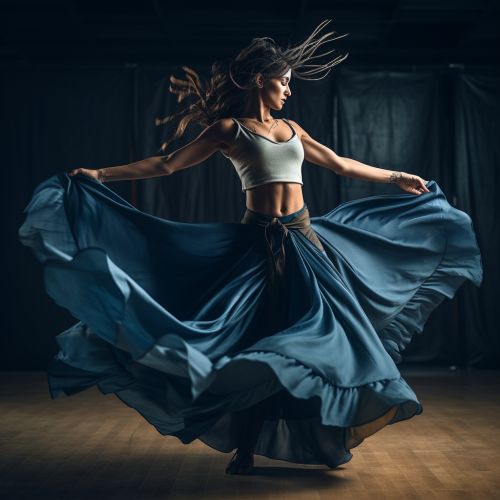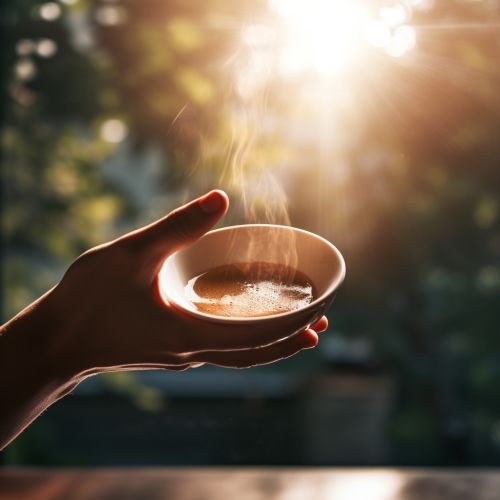The Science of Human Proprioception and Kinesthesia
Introduction
Human proprioception and kinesthesia are two interrelated sensory systems that play a crucial role in our daily lives. Proprioception, often referred to as the "sixth sense," is the body's ability to sense its location, movements, and actions. It's the reason you can touch your nose with your eyes closed or walk up a flight of stairs without looking at each step. Kinesthesia, on the other hand, is the sense that detects bodily position, weight, or movement of the muscles, tendons, and joints. In essence, it provides the brain with information on motion and spatial orientation.


Understanding Proprioception
Proprioception is derived from the Latin "proprius," meaning "one's own," and perception. It was first described in the 19th century by neurologists who were studying the sense of body position and movement. Proprioception is primarily mediated by proprioceptors, specialized sensory receptors located within muscles, tendons, and joints. These receptors include muscle spindles, which monitor changes in muscle length, and Golgi tendon organs, which detect tension within muscles.
Proprioceptors
Proprioceptors are sensory receptors that are located in the muscles and joints. They play a crucial role in proprioception by providing the brain with information about body position and movement. There are two main types of proprioceptors: muscle spindles and Golgi tendon organs.
Muscle Spindles
Muscle spindles are stretch receptors located within the muscle fibers. They are sensitive to changes in muscle length and the rate of length change. When a muscle is stretched, the muscle spindles are also stretched, which triggers an impulse to the brain. This impulse informs the brain about the degree of stretch in the muscle, allowing the body to adjust and maintain balance and coordination.
Golgi Tendon Organs
Golgi tendon organs (GTOs) are located at the junction between muscles and tendons. They are sensitive to changes in muscle tension. When a muscle contracts, it exerts tension on the tendon, which is detected by the GTOs. This information is relayed to the brain, which then adjusts the muscle's tension to prevent injury.
Understanding Kinesthesia
Kinesthesia, also known as the kinesthetic sense, is the sensory system that provides the brain with information about movement and spatial orientation. It is closely related to proprioception, but while proprioception refers to the sense of body position, kinesthesia refers to the sense of body movement. Kinesthesia is mediated by the same proprioceptors that mediate proprioception, as well as by the vestibular system in the inner ear, which detects changes in head position and movement.


The Vestibular System
The vestibular system is a sensory system located in the inner ear that contributes to balance and spatial orientation. It consists of two main components: the semicircular canals, which detect rotational movements, and the otolith organs, which detect linear movements and the force of gravity. The vestibular system works in conjunction with the proprioceptive system to provide the brain with a comprehensive understanding of the body's position and movement in space.
The Role of Proprioception and Kinesthesia in Daily Life
Proprioception and kinesthesia are essential for virtually all motor activities, from simple actions like walking and reaching for an object, to complex movements like dancing or playing sports. They allow us to move smoothly and efficiently, maintain balance and posture, and coordinate our movements with those of other people and objects in our environment. Without these senses, we would have to rely solely on visual cues to guide our movements, which would be slow, clumsy, and inefficient.


Disorders of Proprioception and Kinesthesia
Disorders of proprioception and kinesthesia can result from a variety of causes, including neurological disorders, injuries, and certain medical treatments. Symptoms may include difficulty with balance and coordination, clumsiness, difficulty sensing the position of the body or limbs, and a tendency to rely heavily on visual cues for movement. Treatment typically involves physical therapy to help improve balance and coordination, and to retrain the brain to use proprioceptive and kinesthetic information more effectively.
Conclusion
In conclusion, proprioception and kinesthesia are essential sensory systems that provide the brain with information about body position, movement, and spatial orientation. They play a crucial role in our daily lives, enabling us to move smoothly and efficiently, maintain balance and posture, and interact effectively with our environment. Understanding these senses and how they work can provide valuable insights into human motor control and the nature of sensory perception.
